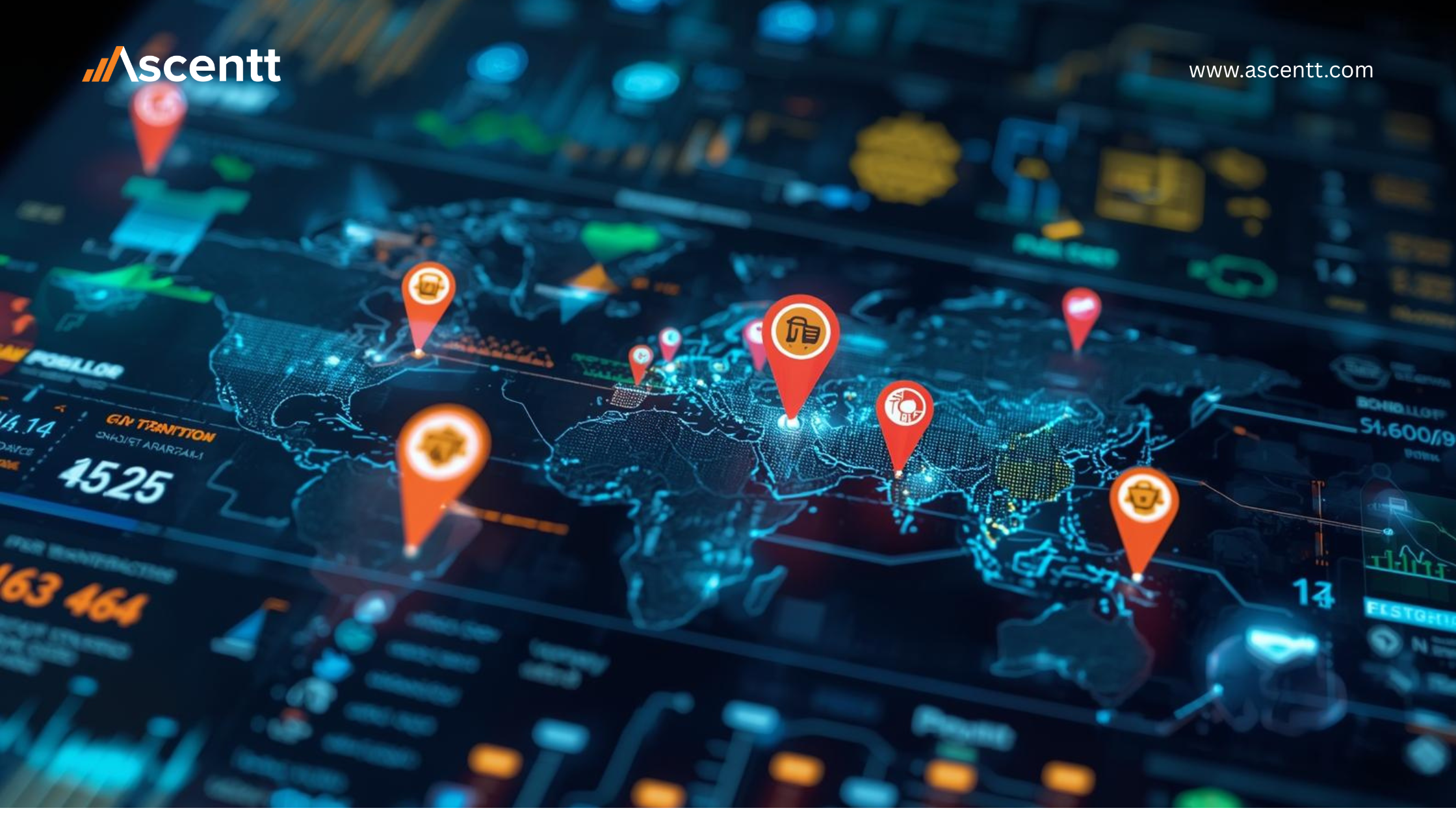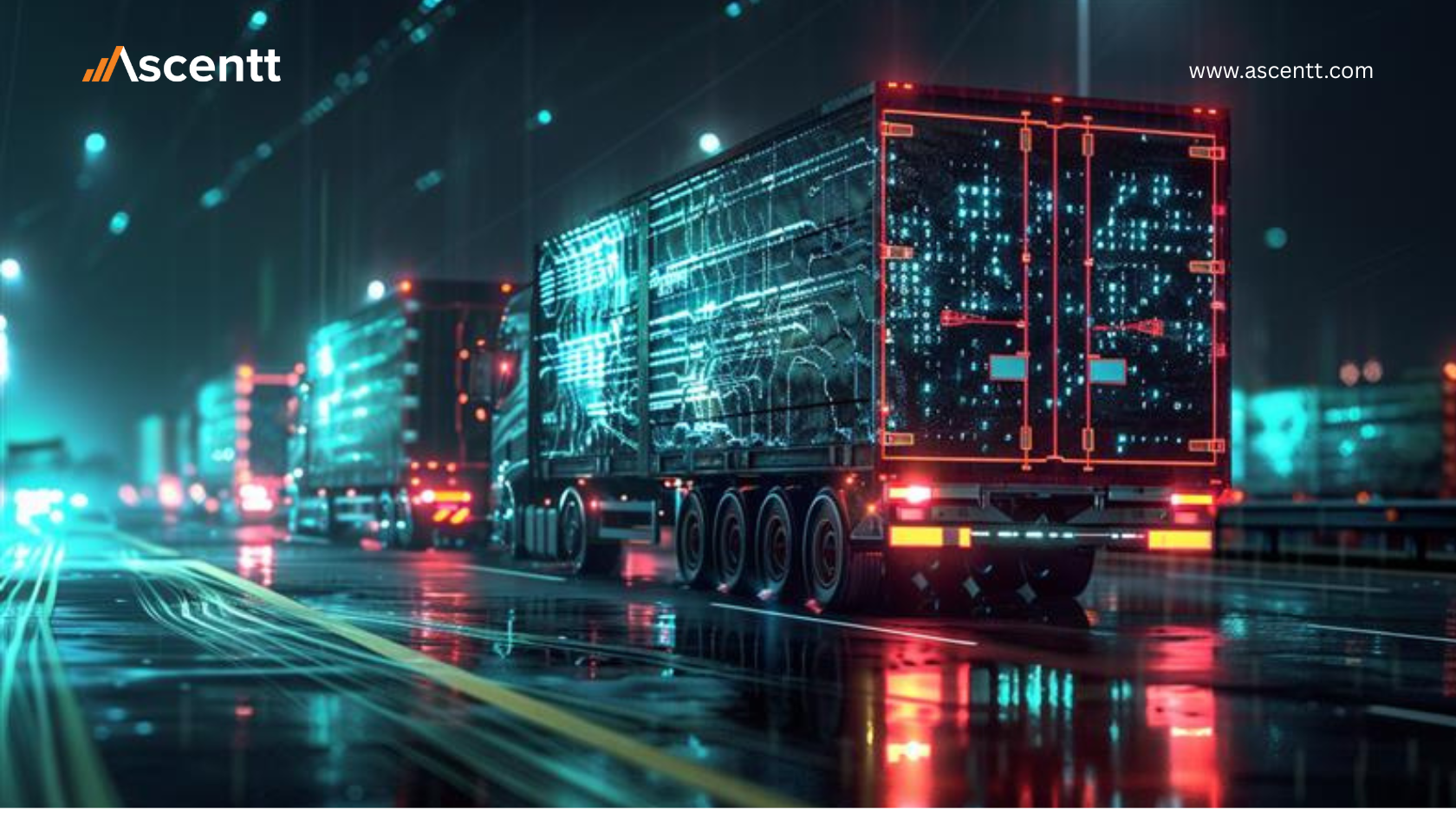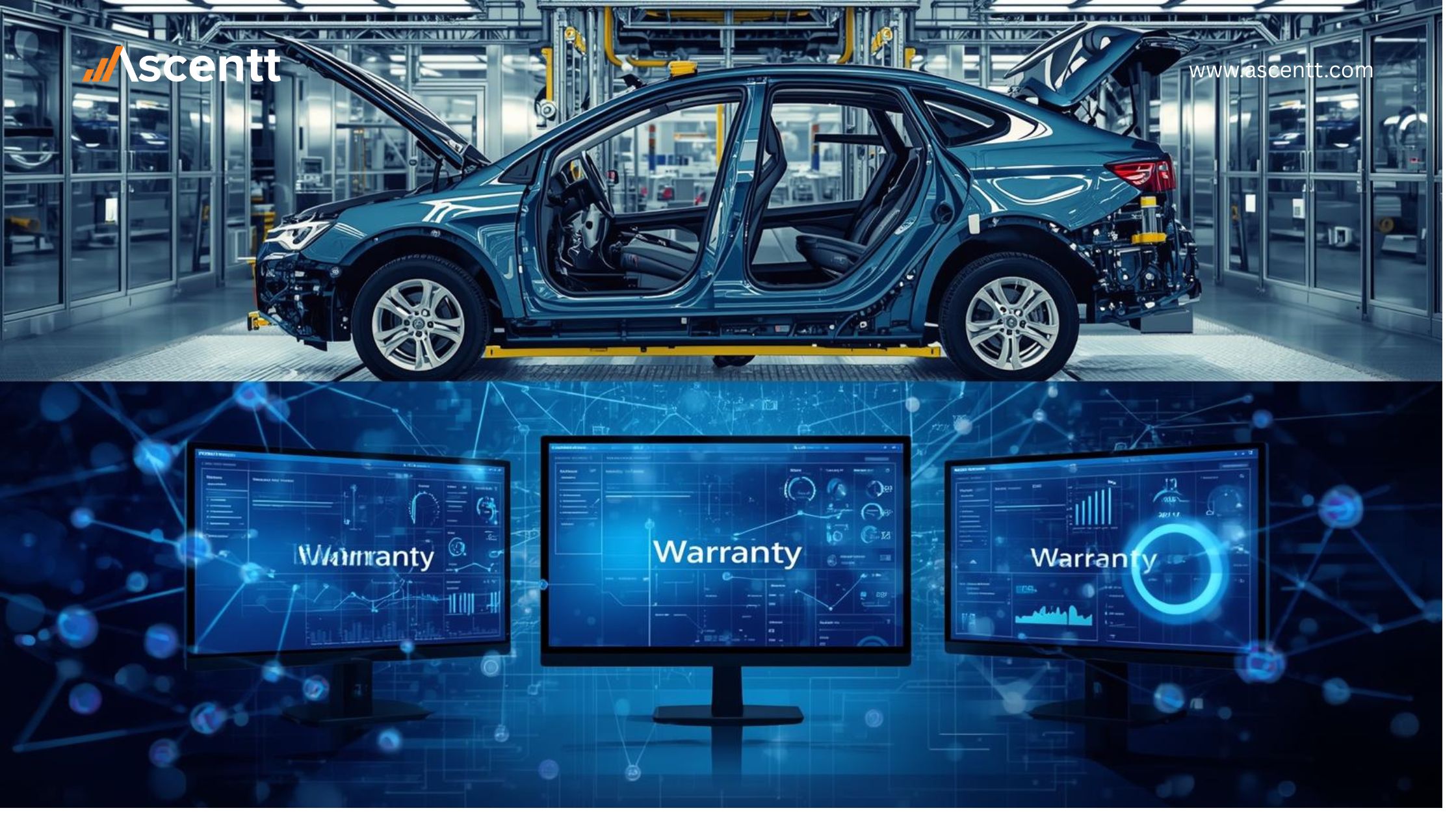Supply chains become fragile when any link lacks clarity. In this intricate network, knowing the exact location of suppliers, transportation paths, and even terrain and traffic conditions is crucial. Geographic Information Systems (GIS) facilitate this visibility while simultaneously reducing the risks involved in the supply chain, speeding up delivery processes, and minimizing costs.
Continue reading to discover how GIS contributes to establishing a robust digital infrastructure and shaping the future of intelligent logistics.
How GIS Drives Digitalization
A strong digital foundation means combining clean, well-engineered data pipelines with real-time inputs from IoT devices, overlaid with spatial layers that reveal patterns others miss. By turning geographic maps into a live instrument that feeds real-time decisions, GIS creates a strong digital foundation in three overlapping ways:
- Asset and shipment visibility: As IoT sensors feed location and condition data, GIS detects that in real space, providing visibility into where exactly a shipment is.
- Routing and re-routing: When delays happen due to weather, traffic, or customers, spatial intelligence lets systems recalculate routes and delivery times.
- Risk modeling and scenario planning: With GIS, companies can map which supplier routes are vulnerable, which ports are prone to delay, and which warehouses are over-exposed, allowing risks to be detected before they become crises.
How GIS Transforms Supply Chain and Logistics

GIS is central to transforming operations from slow, reactive processes to lean, anticipatory systems. Spatial intelligence adds context that data alone doesn’t provide. Here’s how they transform supply chain and logistics:
- Inventory placement gets optimized by mapping demand density, transport costs, and warehouse capacity. Accurate warehouse location planning reduces idle stock, shortens delivery routes, and lowers costs.
- Real-time shipment tracking and transparency: GIS allows visualization of inventory, transport assets, warehouses, and retail locations. Stakeholders can view the status, identify potential delays, and take action.
- Risk detection: When natural disasters, infrastructure collapses, or geopolitical instability impact the supply chain, the spatial layout of suppliers, routes, and alternatives helps craft a corresponding response.
Ascentt’s Approach: Data Engineering, AI, IoT in Unison
What sets apart firms that merely collect spatial data from those that leverage it as a strategic advantage is integration. Ascentt brings three disciplines together for end-to-end visibility:
- Data engineering lays the groundwork. No GIS insight is valuable unless your input data is clean, timely, and properly structured. Ascentt builds pipelines to bring in supplier geographies, shipment tracking, and inventory status without error or delay.
- IoT provides the live signals. Crates, trucks, docks, and warehouses equipped with sensors report their status in terms of movement, temperature, humidity, and delays. When this information is connected to GIS, the locations of shipments can be tracked instantly, and the cause of the holdups can be understood.
- AI integration opens the door to pattern detection, forecasting, and automated decision support. AI models can understand variations in transit times, predict the occurrence of bottlenecks, or provide alternative routes as soon as new data becomes available, all without human intervention.
Use Cases: Brands Getting It Right
Here are companies bringing GIS-driven spatial intelligence into supply chain and logistics, showing what’s possible:
- General Motors uses GIS to map global supply chain risk. They monitor suppliers in real-time, detect adverse events as they occur, and adjust sourcing routes or inventory strategies accordingly.
- Nike builds its retail-distribution strategy around demand mapping and location analytics. It utilizes GIS to identify areas where demand is increasing, determine the distance between customers and warehouses, and optimize delivery costs by adjusting inventory locations.
How Ascentt Brings Spatial Intelligence to Your Supply Chain
Once spatial intelligence is baked in, the gains amplify. Each decision can draw on awareness of location, risk, and previous behavior. Here’s how Ascentt brings spatial intelligence to your supply chain:
- Audit and map your current state, including your supply nodes, type of shipments, and bottlenecks.
- Design a robust data architecture using data generated from IoT, supplier feeds, and inventory systems. Add GIS layers, including road networks, weather data, traffic information, and geopolitical risk assessments.
- Deploy tracking and real-time feed to enable the GIS platform to visualize routes and alert when anomalies occur automatically.
- Layer AI to predict route delays, suggest alternative paths, forecast inventory levels, and optimize warehouse usage – thus improving efficiency while reducing costs.
The Bottom Line
Spatial intelligence backed by GIS and powered by strong data engineering helps turn supply chain risk into opportunity. When logistics decisions are informed by geography, resilience follows. Companies can more easily anticipate (and prevent) delays and curtail costs.
Ascentt can help you streamline your supply chain. Please speak to our experts today to get started!
FAQs
What is the role of GIS in supply chain visibility?
GIS enhances visibility by displaying the real-world locations of assets, shipments, and suppliers, allowing delays or risks to become apparent sooner.
How does IoT enhance spatial intelligence?
IoT sensors supply live location or condition data, which GIS uses to map movement and trigger rapid decision changes.
Can GIS help in cost reduction?
Yes, by optimizing routes, reducing idle inventory, and mitigating risk exposure, spatial intelligence reduces waste and enhances efficiency.





